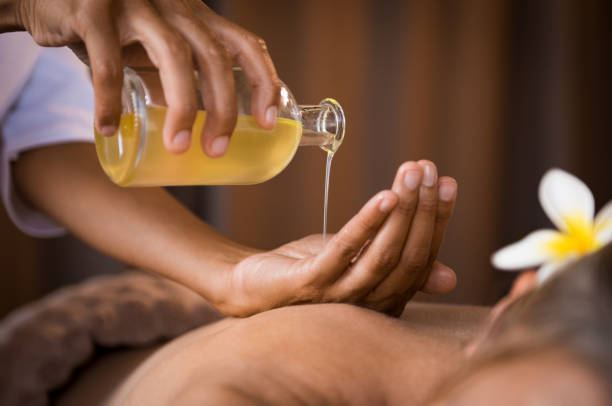Home Wellness & Massage: What’s Evolving in 2025
As we look ahead to 2025, the landscape of home wellness and massage is undergoing a fascinating transformation. With the increasing demand for convenient, personalized relaxation solutions, innovative technologies and practices are emerging to meet these needs. From cutting-edge massage devices to DIY wellness techniques, the future of at-home relaxation promises to be more accessible and tailored than ever before. Let's explore the trends shaping the evolution of home massage and wellness in the coming years.

What Trends May Shape Home Massage in 2025?
The home massage industry is poised for significant changes in 2025, driven by advancements in technology and shifting consumer preferences. One notable trend is the integration of artificial intelligence (AI) and machine learning into massage devices. These smart systems will be capable of analyzing individual body types, tension points, and user feedback to deliver highly personalized massage experiences.
Another emerging trend is the development of compact, multi-functional massage tools. As living spaces become more constrained in urban areas, manufacturers are focusing on creating versatile devices that can address various massage needs without occupying excessive space. These all-in-one solutions might combine features like percussion therapy, heat application, and aromatherapy in a single, portable unit.
Additionally, we’re likely to see a rise in eco-friendly and sustainable massage products. Consumers are increasingly conscious of their environmental impact, leading to a demand for massage oils, lotions, and equipment made from renewable resources and biodegradable materials.
Why Are Some Turning to DIY Wellness Practices?
The shift towards DIY wellness practices is gaining momentum for several reasons. Firstly, the convenience factor plays a significant role. With busy lifestyles becoming the norm, many individuals are seeking ways to incorporate relaxation and self-care into their daily routines without the need for appointments or travel.
Cost-effectiveness is another driving force behind this trend. While professional massage services can be expensive, especially when sought regularly, DIY techniques allow individuals to enjoy the benefits of massage more frequently at a fraction of the cost. This accessibility has opened up wellness practices to a broader demographic.
Moreover, the empowerment that comes with learning and applying self-massage techniques is appealing to many. It provides a sense of control over one’s well-being and allows for immediate relief when needed. As more resources become available online, including video tutorials and interactive guides, mastering these skills is becoming increasingly achievable for the average person.
How Are At-Home Relaxation Devices & Tools Evolving?
The evolution of at-home relaxation devices and tools is rapidly accelerating, with technology playing a pivotal role. One of the most exciting developments is the integration of virtual reality (VR) and augmented reality (AR) into massage experiences. These technologies can transport users to serene environments, enhancing the mental relaxation aspect of massage therapy.
Wearable massage technology is also advancing, with smart garments that can provide targeted pressure and vibration to specific muscle groups. These wearables may sync with smartphone apps to track muscle tension, stress levels, and sleep patterns, offering personalized recommendations for optimal relaxation.
Furthermore, we’re seeing an increase in the sophistication of handheld massage tools. Advanced percussion massagers now offer adjustable intensity levels, interchangeable heads for different muscle groups, and even heat therapy options. Some devices are incorporating biofeedback sensors to detect muscle stiffness and automatically adjust their operation for maximum effectiveness.
What Role Will Technology Play in Home Wellness by 2025?
Technology is set to play a central role in shaping home wellness practices by 2025. One of the most significant advancements will likely be the integration of Internet of Things (IoT) devices into wellness routines. Smart home systems may coordinate various elements of the relaxation experience, from adjusting room lighting and temperature to activating massage chairs and diffusing calming scents.
Artificial intelligence will continue to refine personalized wellness recommendations. AI-powered apps might analyze data from wearables, sleep patterns, and user input to suggest optimal times for massage sessions and recommend specific techniques tailored to individual needs.
Telemedicine and remote consultations are also expected to influence home wellness practices. Virtual sessions with massage therapists or wellness coaches could provide expert guidance on self-massage techniques, proper use of at-home devices, and overall relaxation strategies, bridging the gap between professional services and DIY approaches.
How Might Traditional Massage Adapt to Home-Based Trends?
Traditional massage practices are not being left behind in this shift towards home-based wellness. Instead, they are adapting and finding new ways to remain relevant. Many massage therapists are now offering virtual consultations, providing clients with personalized self-massage routines and guidance on using at-home tools effectively.
Some massage schools and practitioners are developing comprehensive online courses, teaching individuals the fundamentals of various massage techniques that can be safely practiced at home. This educational approach not only empowers individuals but also helps maintain the connection between professional therapists and their clients.
Additionally, we may see an increase in hybrid services, where therapists combine in-person sessions with remote follow-ups and guidance for at-home care. This approach could help extend the benefits of professional massages between appointments and provide ongoing support for clients’ wellness journeys.
As we approach 2025, the landscape of home wellness and massage is evolving to become more technologically advanced, personalized, and accessible. While the core principles of relaxation and body care remain unchanged, the methods and tools available to achieve these goals are expanding rapidly. This evolution promises to make the benefits of massage and wellness practices more attainable for a wider audience, potentially leading to improved overall well-being for many individuals in the comfort of their own homes.




